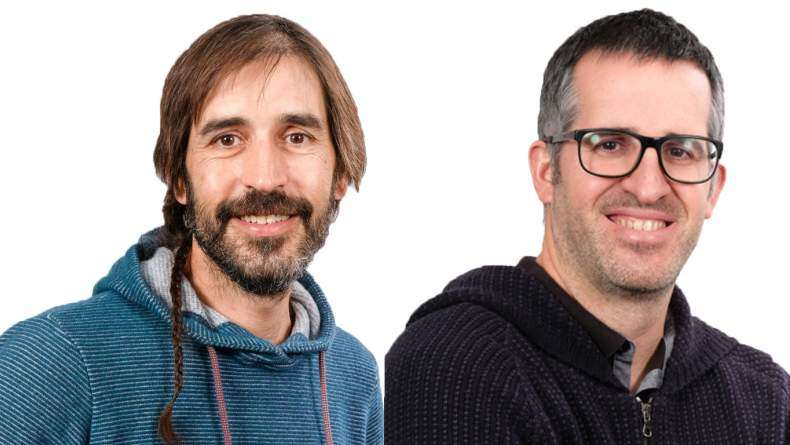BCMaterials Fortnightly Seminars #14

[break]
“Permalloy nanodisks prepared by colloidal lithography for biomedical applications”
Maite Goiriena
Magnetic nanoparticles are extensively studied for biomedical applications because their size are comparable to biological entities, while providing remote capabilities of actuation. Disk shaped ferromagnetic nanostructures display an attractive alternative to chemically-synthetized oxide nanoparticles that are used normally. First, Permalloy (Py) nanodisks display much higher saturation magnetization and second, with the appropriate dimensions, they can present a spin vortex magnetic configuration, which leads to net zero magnetization at remanence, eliminating the problem of particle agglomeration. Therefore, Py nanodisks present a huge potential for biomedical applications, ranging from cancer cell destroy by hyperthermia or mechanical actuation to MRI contrast enhancement and drug delivery. In fact, micrometric disks has been shown to produce cell apoptosis by their mechanical oscillation under a low ac field. Disks in the nanometer scale might cross cell membrane expanding the biomedical possibilities. The fabrication methods of nanostructures such as electron beam lithography or deep UV photolithography offer a high control on particle size and geometry, but they imply either a very low yield production or the use of state of the art and expensive equipment. As a satisfactory alternative, self-assembling routes provide high volume and low cost production of Py nanodisks. In this work we demonstrate the excellent capabilities of Hole-mask Colloidal Lithography (HCL) to produce high quality Py nanodisks with a yield adequate for biomedical applications (several micrograms per cm2, approximately 1 miligram in a 2´´ wafer).The parameters of HCL process allow to obtain Py nanodisks with different dimensions controlling a well-defined magnetic vortex state. Effective procedures for releasing the fabricated nanodisks from the substrate are under development, which will permit in vitro biomedical experiments.
“Nanocellulose for flexible electronics”
Eduardo Fernández
Summary The main objective of this investigation is to use the cellulose as substrate for electronics. The cellulose when crystalizes is opaque, however can be fabricated in a manner where are crystalized clusters with different grain sizes. In this case the cellulose is transparent. We characterize the structural properties and its dielectrical properties of the cellulose for flexible electronic applications.
Related news
María Calles, nueva doctora de BCMaterials
Queremos felicitar a María Calles García por haber obtenido su doctorado en Ciencia y Tecnología de Materiales por la UPV/EHU. El 4 de diciembre María realizó una brillante defensa de su tesis...Charla invitada con investigadores del Instituto de Microelectrónica de Barcelona (3 de diciembre)
El próximo 3 de diciembre, a partir de las 12:00 en el auditorio Martina Casiano de Leioa, BCMaterials recibirá a los investigadores titulares del Instituto de Microelectrónica de Barcelona (IMB-CNM...Charla invitada con Liu Yao sobre baterías de metal-litio (2 de diciembre)
El próximo lunes 2 de diciembre, Liu Yao, profesor del Shanghai Institute of Applied Physics presentará una charla invitada en BCMaterials titulada ‘Li Metal Batteries: From Liquid to Solid-State’....Éxito del workshop anual de BCMaterials, dedicado a materiales críticos
La exitosa edición 2025 del workshop anual de BCMaterials reunió el pasado 19 de noviembre en Leioa a un centenar de asistentes para examinar el estado del arte y debatir sobre los materiales...



